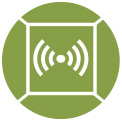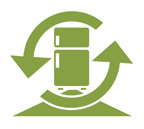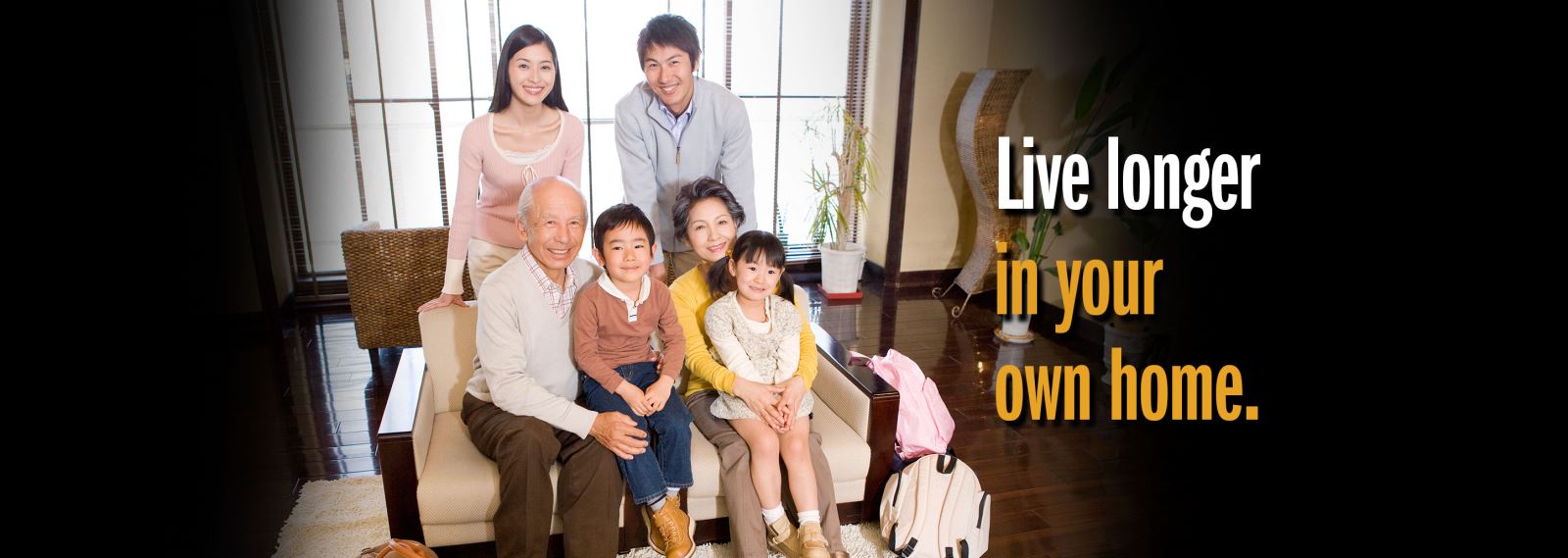
Who Needs an Accessible Home? You Do!
Myth: The need for accessibility is low because only a small percentage of people have a need.
Fact: 60% of all new houses are projected to have a resident with accessibility needs over the lifetime of the house and most homes have visitors from time to time with accessibility needs.
Accessibility Features Property Tax Credit
The first option for homeowners is to add just those Accessibility Features that make sense for your home and your needs. For maximum flexibility, the program also includes two levels of Accessibility Standards — Level I (VISITable) homes and Level II (LIVEable) homes. Whichever approach makes sense for you, the goal is to create more homes that welcome people at all ages and stages of life.
Property Tax Credit — runs with property- 50% of eligible costs. Up to $2,500 less other subsidy. Amount of credit that exceeds tax imposed carries over.
Applicability — Expenditures in excess of $500. Incurred within 12 months of application.
Type of residence ownership — Condominium Unit. Attached or detached single family dwelling unit.
School Impact Tax Credit — Not Applicable

1. No-step front door entrance or a no-step entrance to another location providing access to the main living space.

2. Ramp creating a no-step entrance.

3. Exterior doorway with a 32-inch clear opening, and exterior lighting controlled from inside the residence or automatic or continuously on.

4. An exterior or interior elevator or lift or stair glide unit.

5. An interior doorway with a 32-inch clear opening.

6. Alarm, appliance, and control structurally integrated to assist with a sensory disability.

7. Maneuverable bathroom or kitchen.

8. Walls around a toilet, tub, or shower reinforced and properly installed grab bars.

9. Accessibility-enhanced bathroom, including a walk-in or roll-in shower or tub.
10. Lever Door Handles
11. Chair Lift Device - Construction drawings required
12. Chair Height Toilet
13. Relocation of switches, doorbells, thermostats, and breaker boxes – no more than 48” above the floor
14. Relocation of electrical receptacles – no more than 15” above the floor
15. Closet renovations for accessibility, including closet rods that adjust from 3’ to 5’6”
Level I (VISITable) Accessibility Property Tax Credit
Accessibility Standards for Level I (VISITable) home and Level II (LIVEable) home include design elements such as a no-step entrance, and slightly wider interior doors. These elements accommodate people living with temporary or permanent disabilities as well as friends or relatives with mobility limitations and make it easier for everyone including access for a baby stroller or large objects.
-
Property Tax Credit — runs with property - Up to $3,000 less other subsidy including school impact tax credit. Maximum credit to be applied in any tax year is $2,000 and excess credit carries over.
-
Applicability — Expenditures in excess of $500. Incurred within 12 months of application.
-
Type of residence ownership — Attached or detached single family dwelling unit.

A. Access into the Home
At least one no-step entrance

B. Place to Visit
Connected to an accessible route to a place to visit on the entry level

C. Powder Room
A usable powder room or bathroom

D. Interior Doorway
A 32-inch nominal clear width interior door
Accessibility Standards for Level I (VISITable) home and Level II (LIVEable) home include design elements such as a no-step entrance, and slightly wider interior doors. These elements accommodate people living with temporary or permanent disabilities as well as friends or relatives with mobility limitations and make it easier for everyone including access for a baby stroller or large objects.
-
Property Tax Credit — runs with property - Up to $3,000 less other subsidy including school impact tax credit. Maximum credit to be applied in any tax year is $2,000 and excess credit carries over.
-
Applicability — Expenditures in excess of $500. Incurred within 12 months of application.
-
Type of residence ownership — Attached or detached single family dwelling unit.

A. Access into the Home
At least one no-step entrance

B. Place to Visit
Connected to an accessible route to a place to visit on the entry level

C. Powder Room
A usable powder room or bathroom

D. Interior Doorway
A 32-inch nominal clear width interior door

E. Accessible Circulation Path
An interior way of passage from one room to another that can accommodate a wheelchair or other mobility aid.

F. Accessible Kitchen
A kitchen that can accommodate a wheelchair or other mobility aid and meets the specification in the Montgomery County Code.

G. Accessible Bedroom
At least one accessible bedroom

H. Accessible Bathroom
Accessibility-enhanced full bathroom that includes a walk-in or roll-in shower or tub
Note: Nothing in these requirements prevents the use of designs, products, or technologies, such as an elevator or a lift, provided they result in substantially equivalent or greater accessibility and usability.
For further details, see DFL Technical Guidelines (PDF), p 11-12
What is required?
- After final building inspection, be sure to submit the Design for Life – Application for Tax Credit (PDF) to receive your property tax credit.







